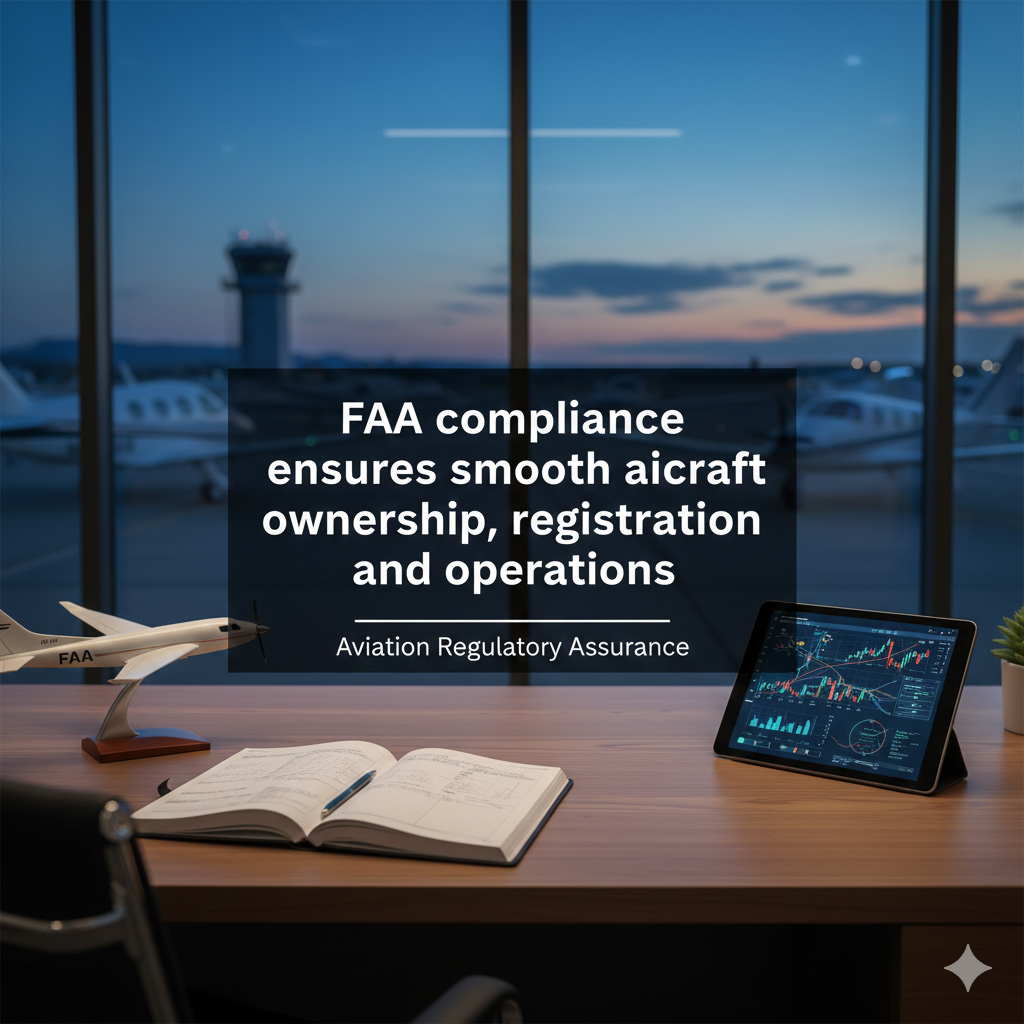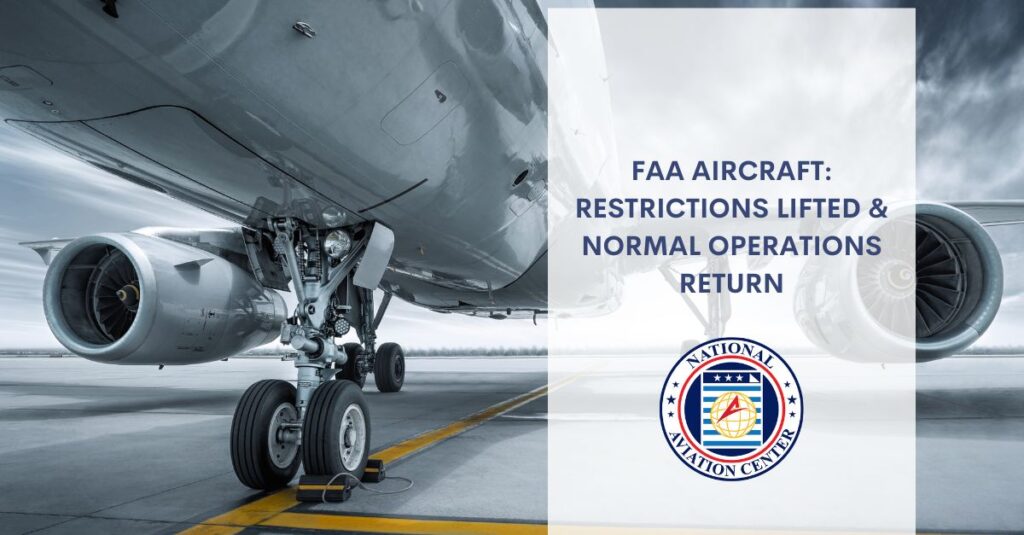The long-awaited return to regular airline service has arrived — with the lifting of the FAA aircraft restrictions, the skies are clearing and normal operations are resuming. As part of the National Aviation Center, we’re here to help you understand what this major shift means, why it matters for aviators and travelers, and how it ties into broader aircraft registration, financing, and ownership considerations.

What Just Happened: FAA Aircraft Emergency Order Ends
On November 17, 2025, at 6:00 a.m. Eastern time, the Federal Aviation Administration (FAA), alongside the U.S. Department of Transportation (DOT), officially terminated the emergency order that had imposed flight reductions across the national airspace system.
This decision came after a detailed review by the FAA safety team, which observed a “steady decline of staffing-trigger events” among air traffic control facilities. Federal Aviation Administration Staffing levels have now returned to align with pre-shutdown norms, dramatically easing prior safety concerns. Aviacionline
With the order lifted, several temporary restrictions are also ending:
- Limits on general aviation at 12 airports
- Restrictions on visual flight rule (VFR) approaches at certain facilities
- Curfews on commercial space launches and reentries, which were previously confined to 10:00 p.m.–6:00 a.m. local time
- Prohibitions on parachute operations and aerial photo missions near key facilities
The reinstatement of full National Airspace System (NAS) operations represents a major milestone for U.S. aviation, restoring stability for both commercial and general aviation flights.
Why This Matters for Pilots & FAA Aircraft Operators
For pilots and aircraft operators, the removal of flight restrictions is more than symbolic — it directly impacts how they plan and execute operations. Here’s how:
- Operational freedom restored: With general aviation limitations lifted, pilots can resume previously curtailed flight plans at the 12 affected airports.
- Safety risk reduced: The FAA’s safety team based their decision on improved staffing metrics. That means less strain on air traffic controllers and reduced risk of operational disruptions.
- Space launches normalized: Commercial space launches and reentries no longer have to be squeezed into late-night windows. That flexibility could benefit private space firms and operators.
- Regulatory burden eased: Pilots flying under visual flight rules at certain facilities can again make full use of established approach procedures, increasing efficiency and lowering complexity.
At the National Aviation Center, our service helps pilots and aircraft owners navigate regulatory landscapes. Whether you need help understanding how changes like this affect your flight planning, or require assistance with documentation, we provide tailored support.
Implications for Travelers & Commercial Airlines
This development also has big-picture importance for travelers and commercial carriers:
- Flight capacity rebound: Airlines can restore schedules previously cut by up to 10 percent, particularly at 40 high-traffic airports.
- Fewer cancellations and delays: With full staffing back online, travelers are likely to see improvements in on-time performance and reduced disruption risk.
- Airport reliability improved: The reinstatement of normal NAS operations supports better predictability for both domestic and international travel.
- Enforcement under review: The FAA is assessing reports of non-compliance by carriers during the emergency order. That could have implications for airlines and passengers alike.
We help travelers understand not just flight schedules, but also the behind-the-scenes regulatory dynamics that can affect aviation availability and reliability.
Why This Change Is Significant for FAA Aircraft Ownership & Registration
The return to normal operations intersects in meaningful ways with aircraft ownership, regulatory compliance, and financial arrangements.
FAA Registration
As flights normalize, maintaining compliance through proper FAA registration becomes even more important. Whether you’re updating ownership details or ensuring your aircraft is correctly listed, streamlined operations mean fewer surprises — and you can count on us to guide you through the process.
Aircraft Change of Address
Aircraft frequently move bases. When you change your aircraft’s home base, you need to update your address on file with the FAA. That “aircraft change of address” ensures your registration stays accurate, your paperwork is in order, and your aircraft remains fully compliant.
Aircraft Mortgage
Many aircraft owners finance their planes. If you have an aircraft mortgage, the return to full flight operations is a positive signal: better utilization can support revenue, which in turn helps with cash flow and financial planning. We assist owners and lenders in navigating registration liens and ensuring that security interests are properly documented.
Plane Exchange of Ownership
When buying or selling a plane — a plane exchange of ownership — it’s critical to know that the regulatory landscape is stable. The lifting of restrictions reduces operational risk, making transactions smoother. We provide services to ensure seamless transitions and clean title transfers.

How the National Aviation Center Supports FAA Aircraft Owners and Travelers
As part of our ongoing mission, we offer a full suite of services tailored to aircraft owners, pilots, and industry professionals. With the return of normal operations, we’re here to help in ways that matter now more than ever:
- Assistance with initial FAA aircraft registration (linking to our process and guidance)
- Support for aircraft change of address filings to ensure your records stay up to date
- Guidance and documentation for aircraft mortgage filings, including how to create and maintain security instruments
- Help facilitating a plane exchange of ownership, making sure title, bills of sale, and records are clean and compliant
- Preparation of an aircraft abstract of title, summarizing ownership history, liens, and encumbrances for transaction or financing purposes
Our team understands the regulatory environment, and we aim to streamline these processes so that owners and operators can focus on flying — not paperwork.
Looking Ahead: Stability & Growth in the Skies
Restoration of normal flight operations marks a turning point. With staffing stabilizing, regulatory burdens easing, and the full National Airspace System back in play, the future looks brighter:
- Airlines can once again plan robust schedules
- General aviation has regained flexibility and predictability
- Space operations benefit from fewer timing constraints
- Aircraft owners and financiers have greater confidence in utilization and value
At the National Aviation Center, we’re positioned to support you through this moment — from ensuring your FAA aircraft registration is current, to helping you manage ownership transfers, mortgage documents, and title histories.
If you’d like to discuss any of these services or need help navigating post-emergency compliance, get in touch. We’re here to make sure your aviation journey stays on course.




